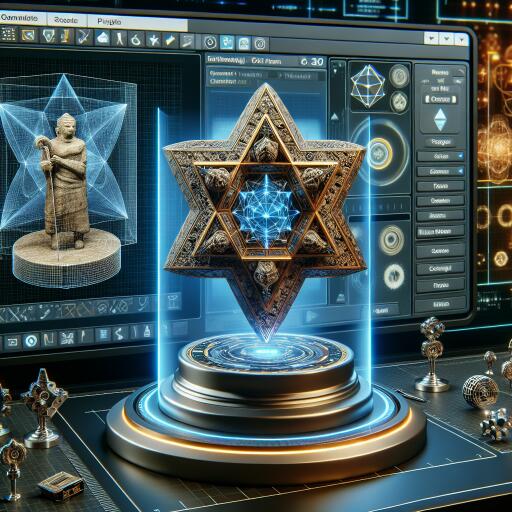Precise 3D Modeling Tech Restores Cultural Properties with High Resolution and Unparalleled Accuracy
In a remarkable advancement in the field of 3D reconstruction technology, the team at Ulsan National Institute of Science and Technology (UNIST), led by Professor Kyungdon Joo, is pioneering a revolutionary approach to restoring cultural heritage properties. Their breakthrough technology, aptly named DITTO (Dual and Integrated Latent Topologies), combines the strengths of existing point cloud and grid methods to achieve unprecedented accuracy in 3D modeling.
As part of their innovative work within the Graduate School of Artificial Intelligence at UNIST, Professor Joo and his research team have developed a method that seamlessly converts point cloud data into a grid format. This dual utilization facilitates the extraction of detailed features that are instrumental in modeling complex structures, even those with slender dimensions. The key to their success lies in the Dynamic Sparse Point Transformer (DSPT), an analysis tool that expertly maneuvers through point cloud data to identify and extract features with remarkable precision.
The implications of DITTO’s enhanced 3D modeling capabilities extend far beyond the realm of cultural heritage restoration. Industries such as medicine, robotics, and virtual reality stand to benefit substantially from the improved accuracy this technology offers. Through the application of an Integrated Implicit Decoder (IID), DITTO predicts the exact spatial position of an object, discerning whether it is located inside or outside a designated 3D space. This ability enables a level of 3D reconstruction detail that surpasses existing technological standards.
One of the most promising applications of this state-of-the-art modeling technology is in the preservation of cultural heritage. Highly accurate 3D reconstructions can serve to restore damaged or deteriorated properties, ensuring their historical and cultural significance is maintained for future generations. “This study not only enhances the precision of 3D reconstruction but also introduces a novel methodology for leveraging 3D data across various technological landscapes,” noted Professor Kyungdon Joo. He further highlighted the technology’s value across a broad spectrum of industries, including the metaverse and computer-aided design and engineering (CAD/CAE).
Jaehyeok Shim, the paper’s first author, shares a vision for the future, “The way we express and utilize 3D data is undergoing a significant transformation, thanks to this technology. Its potential for fostering technological innovation is immense, and collaboration across academic and industrial sectors will be key to unlocking its full potential.”
The research team is preparing to unveil their findings at CVPR 2024, a preeminent computer vision conference that will take place from June 17 to 21 in Seattle, USA. Their paper, which details the intricacies of DITTO technology, is currently accessible on the arXiv preprint server.
With its promise of higher precision and efficiency, DITO technology is set to redefine 3D modeling in several fields. From construction and architecture to manufacturing, the cost savings and increased efficiency stemming from this advanced technology could herald a new era in industrial and cultural preservation practices.
As the digital and physical worlds continue to converge, technologies like DITO










